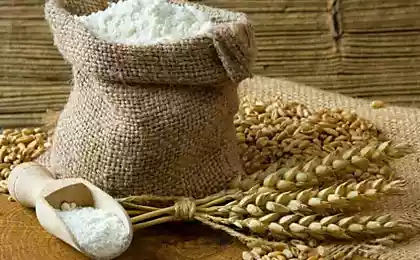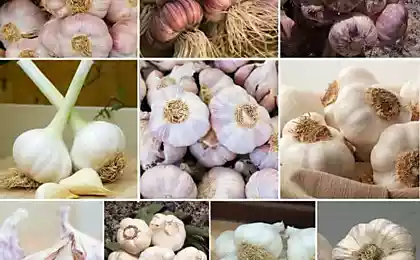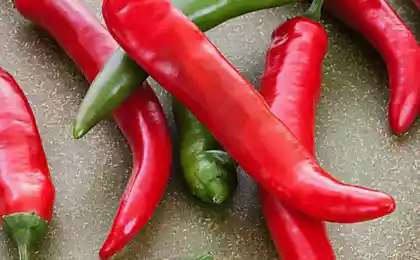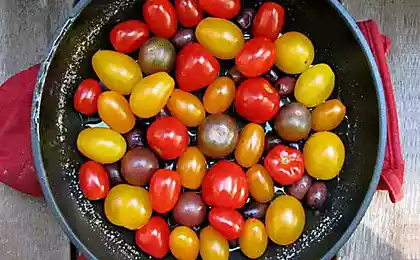196
Making an annual supply, I buy only the highest quality flour, I determine the highest grade by smell.
"Are you checking flour at home?" a friend asked me. The quality of flour greatly affects the baking and not only. In the store on the shelf, we can see the date of manufacture on the package. The fresher the better. But first the flour gets into the warehouse of this store - dry, with racks, or on the floor, in a damp basement. That's why we're bringing an airlift home. flour Or with lumps at least.
Today's edition. "Site" will tell you how determine the quality of flour, making an annual supply. I chew flour, determining the quality of gluten!

The quality of flour should be uniform, without extraneous inclusions and signs of dilution of a larger one. Rub a small amount of flour between your fingers, it should creak and crumble. If the flour rolls into a lump, it is damp and baking will not work.
In flour should not be lumps, impurities, beetles and other insects.

“I warm my breath with flour, I smell it, so as not to take the product with soot and bugs-turtles!” – I learned from a friend who works in a food laboratory. To determine the quality of flour, you need to smell it and taste. The smell and taste should be weak and neutral.
The taste of flour should not be sour, too sweet or rancid. No sense of sand on your teeth. Flour that tastes bitter, and smells sour or moldy, to use dangerous.

You can also mix flour into porridge with an equal amount of water. Good flour will remain white. Add more water to obtain a liquid solution - there should be no sediment at the bottom.
The ash of flour It's a qualitative indicator. Characterizes the amount of mineral impurities in flour. The lower the grade of flour, the higher the ash index. The flour is darker. More use. Hence the conclusion: the most useful is wallpaper flour. Or, as it is now fashionable to call it, whole grain.

¶
If you start with the highest grade - ash content of about 0.5%, and to wallpaper will come to 1.8%. Here's your first flour difference in grades. Only this indicator is not written on the pack. Buying flour in the store, we should just take the manufacturer's word: wallpaper = high ash.
The quality of flour is determined by the laboratory and information about this is written on the packaging. Look at the sign that says 100 grams. flour Protein, fat and carbohydrates. For us, it is protein that is important (it determines the strength of flour). Protein affects the quality of baking, and the preference for using flour depends on its content.

For example, a protein of 10 g means that the strength of the flour is weak. It is ideal only for baking: gingerbread, biscuits and cookies, but is not suitable for yeast dough. The dough in this case will blur, while a long waiting time for lifting will lead to oxidation.
For a yeast protein test, it should be 10.5 or higher. Note that the higher the value, the better.

So remember: the lower the protein content in flour, the lower its strength, that is, gluten (gluten). Flour is afraid of moisture. Therefore, it should be stored in coolness and so that there is no dampness. When it rains outside, I close the window.
Before using flour must be sifted!
I also suggest familiarizing yourself with simple, but sensible rules for choosing pasta. Read the label carefully and don’t be fooled!

Let me tell you, not always very much. flour - that's good. The other day I bought flour and in a hurry did not look at the date. Today I started to make a mix of French bun, and the dough eventually flows and melts. Turns out the flour was literally a week ago. I will have to postpone it for a couple of months... As for the quality, I am lucky, I come across quality flour.
How do you check the quality of flour? In preparation?
Today's edition. "Site" will tell you how determine the quality of flour, making an annual supply. I chew flour, determining the quality of gluten!

The quality of flour should be uniform, without extraneous inclusions and signs of dilution of a larger one. Rub a small amount of flour between your fingers, it should creak and crumble. If the flour rolls into a lump, it is damp and baking will not work.
In flour should not be lumps, impurities, beetles and other insects.

“I warm my breath with flour, I smell it, so as not to take the product with soot and bugs-turtles!” – I learned from a friend who works in a food laboratory. To determine the quality of flour, you need to smell it and taste. The smell and taste should be weak and neutral.
The taste of flour should not be sour, too sweet or rancid. No sense of sand on your teeth. Flour that tastes bitter, and smells sour or moldy, to use dangerous.

You can also mix flour into porridge with an equal amount of water. Good flour will remain white. Add more water to obtain a liquid solution - there should be no sediment at the bottom.
The ash of flour It's a qualitative indicator. Characterizes the amount of mineral impurities in flour. The lower the grade of flour, the higher the ash index. The flour is darker. More use. Hence the conclusion: the most useful is wallpaper flour. Or, as it is now fashionable to call it, whole grain.

¶
If you start with the highest grade - ash content of about 0.5%, and to wallpaper will come to 1.8%. Here's your first flour difference in grades. Only this indicator is not written on the pack. Buying flour in the store, we should just take the manufacturer's word: wallpaper = high ash.
The quality of flour is determined by the laboratory and information about this is written on the packaging. Look at the sign that says 100 grams. flour Protein, fat and carbohydrates. For us, it is protein that is important (it determines the strength of flour). Protein affects the quality of baking, and the preference for using flour depends on its content.

For example, a protein of 10 g means that the strength of the flour is weak. It is ideal only for baking: gingerbread, biscuits and cookies, but is not suitable for yeast dough. The dough in this case will blur, while a long waiting time for lifting will lead to oxidation.
For a yeast protein test, it should be 10.5 or higher. Note that the higher the value, the better.

So remember: the lower the protein content in flour, the lower its strength, that is, gluten (gluten). Flour is afraid of moisture. Therefore, it should be stored in coolness and so that there is no dampness. When it rains outside, I close the window.
Before using flour must be sifted!
I also suggest familiarizing yourself with simple, but sensible rules for choosing pasta. Read the label carefully and don’t be fooled!

Let me tell you, not always very much. flour - that's good. The other day I bought flour and in a hurry did not look at the date. Today I started to make a mix of French bun, and the dough eventually flows and melts. Turns out the flour was literally a week ago. I will have to postpone it for a couple of months... As for the quality, I am lucky, I come across quality flour.
How do you check the quality of flour? In preparation?
Hospitable hostess Paraska from the village of Kosmach told how to bake real Hutsul kulichs
Your birth month will tell you how well you cook.






















